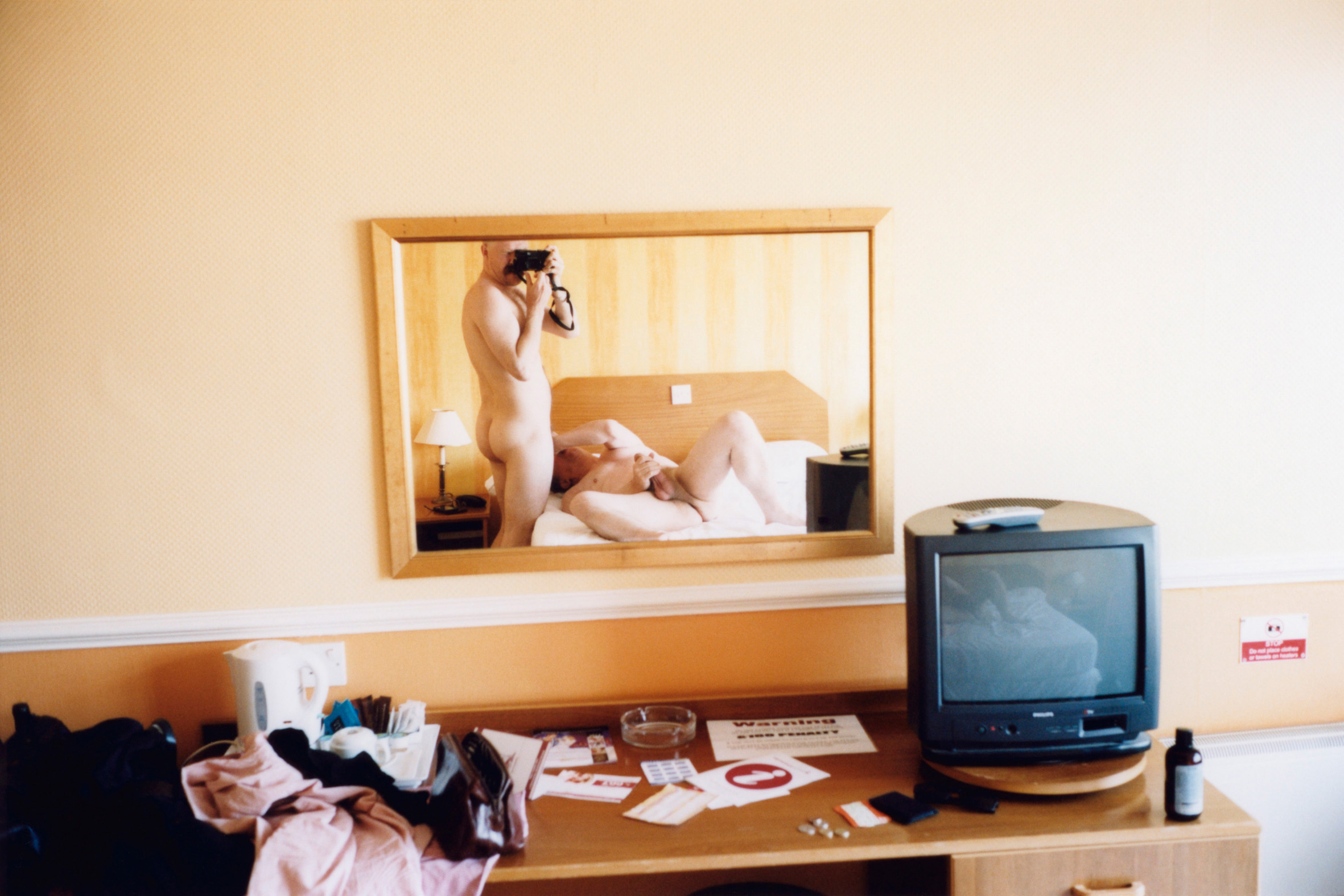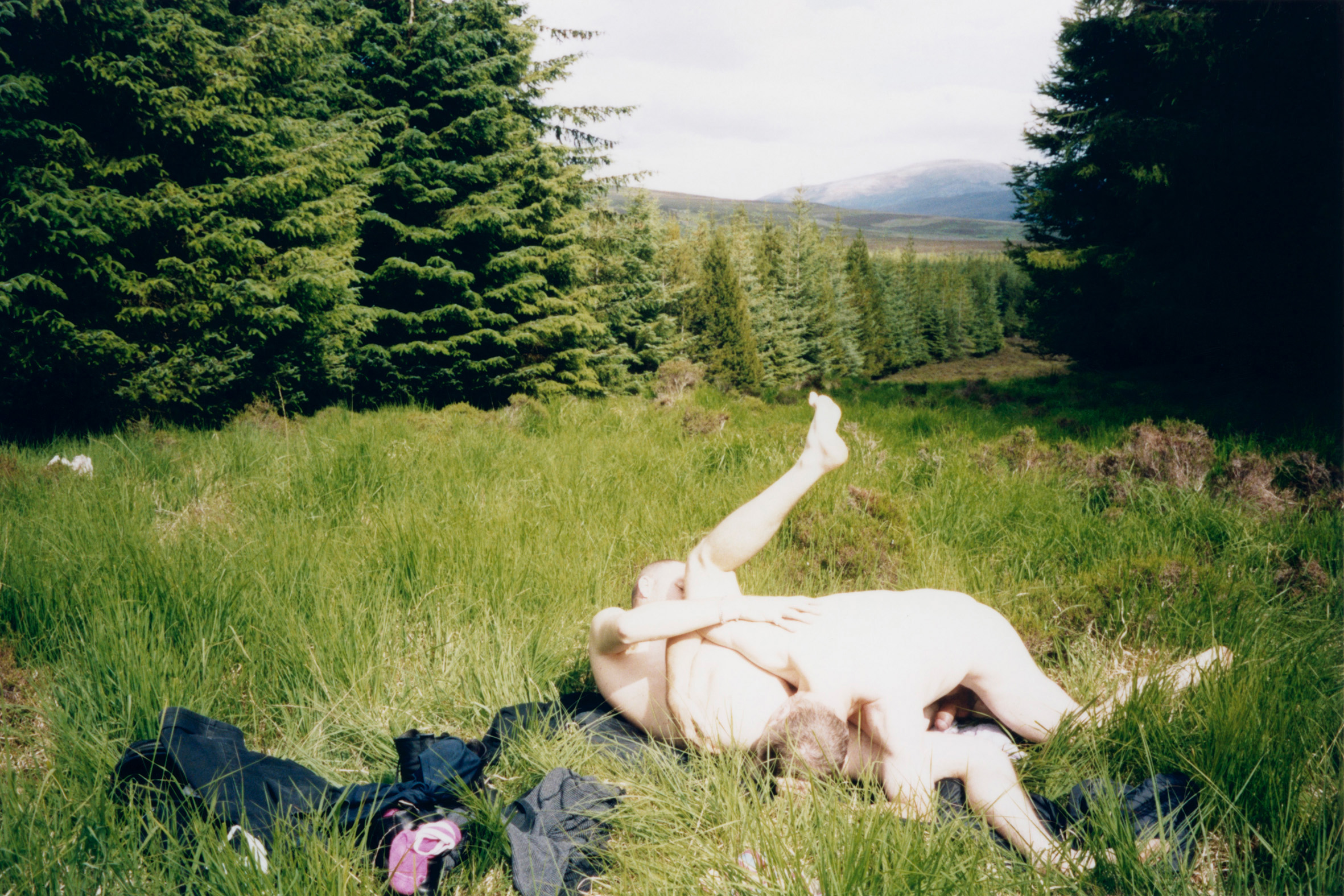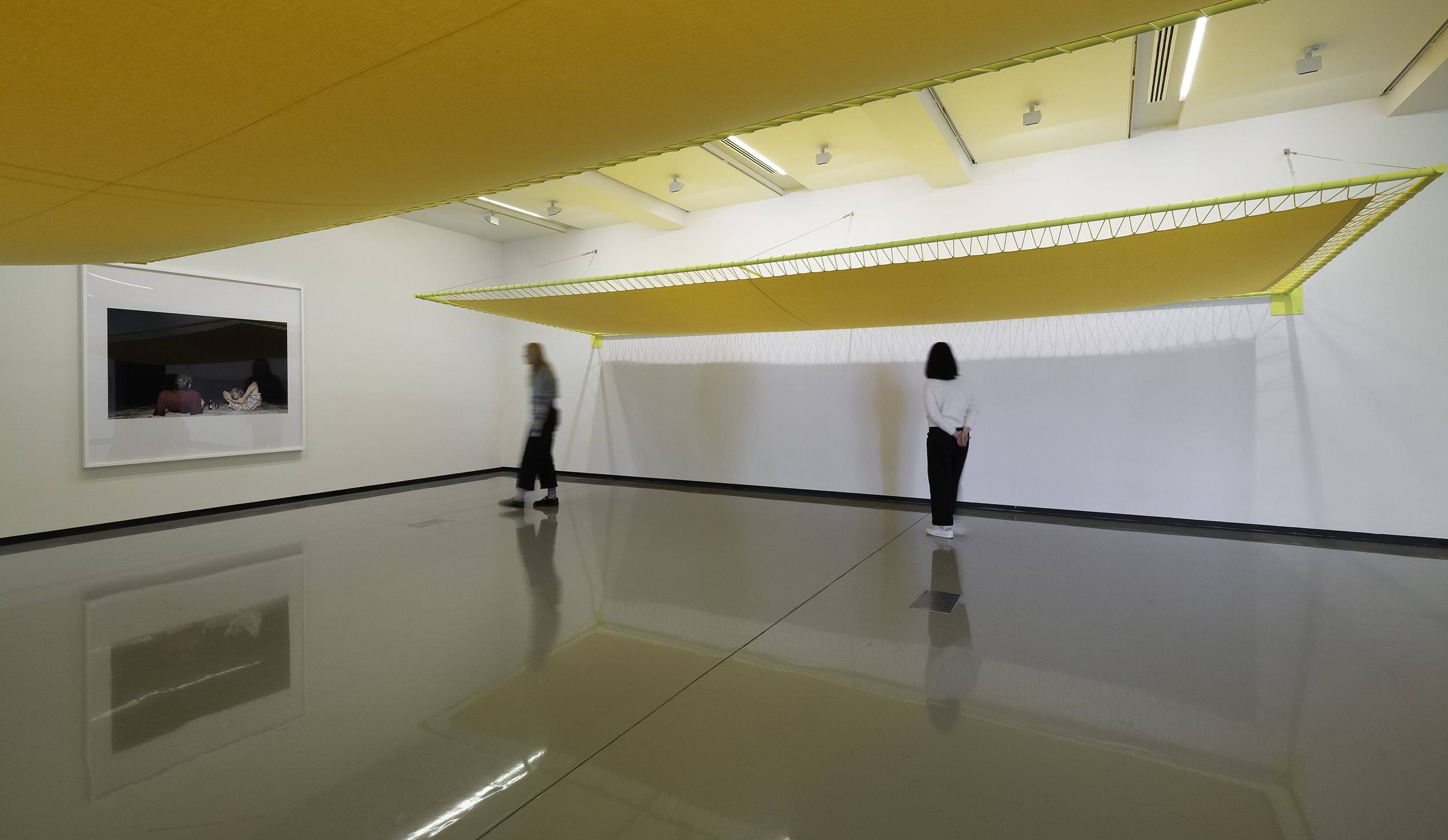Paul Knight: L’ombre de ton ombre
Shaune Lakin
Viewer advice: This review explores themes of sexual intimacy. It contains adult content including nudity and sexually explicit images and language. Viewer discretion is advised.
The title of Paul Knight’s exhibition at MUMA draws on a line from the song “Ne me quitte pas” (1959), where Jacques Brel describes his love for a woman as so vast and full of pathos, he would become the shadow of her shadow. The line creates an image, at once melancholic and romantic, of a will to inseparability, and of two bodies dematerialised and forever fettered by love. “Il faut tout oublier” (You/We have to forget everything), Brel cries elsewhere in the song, in a line which might reflect remorse, but also clarifies how, through love, he and the other have become so absolutely singular.
This image of love-fettered shadows and singularity seems, in the context of an exhibition of work by an artist best known for photographs, highly photographic; it touches on the characterisation, which was there at its birth, of photography as an art of fixing shadows. One of the medium’s pioneers, Henry Fox Talbot, claimed that shadows, “the most transitory of things,” could be “fettered” by photography. In its title and its form, L’ombre de ton ombre lays open a complex network of bodies, shadows and photography, all laminated by love.

I am not sure that I have ever felt the kind of love that Brel sings about in “Ne me quitte pas,” or that Paul Knight has turned his artistic practice around over the last fourteen years, since he met his partner Peter Cattanach in Glasgow in 2009. L’ombre de ton ombre, Knight’s first major monographic presentation at an Australian public museum, focusses on the work he has made since meeting Peter. The exhibition’s centre is Knight’s ongoing photographic project Chamber music (2009—), which documents the intimate pleasures and rituals of his and Peter’s shared domestic, sexual and romantic life. Fifty-three photographs from this series (which now numbers hundreds of pictures) are hung alongside three installations of monochrome bedsheets handwoven by Knight in his Berlin studio, and two chatbots drawing on SMS conversations between Peter and Paul that unfold across a pair of ultramarine screens. Rather than a mid-career survey, L’ombre de ton ombre presents as a beautiful, momentary iteration of a project that elaborates an account of love as an experience at once atomic and cosmological, embodied and completely abstracted.

In the context of time and space (Paul is a great fan of science fiction), and of history and the universe, the thing that will be forgotten is the specificity of Peter and Paul’s love. Whereas earlier Knight photographed other couples having sex, or the places people go to have sex with others, his practice has for the last decade and a half concerned itself with the specificity of love and desire as they circulate, tightly, between himself, Peter and the camera. Intimacy “builds worlds,” as the late cultural theorist Lauren Berlant famously wrote, “producing transpersonal identities and subjectivities” that include, since the night Peter and Paul met, the camera. While they had sex, ate, and laid naked about a hotel room that night, they took photographs of each other. Since then, held by Paul or Peter or propped up by part of a room or landscape, the camera has wilfully shared and registered the singularity of their love. Drawn towards things in the world—and here I am calling on art historian W.J.T. Mitchell’s ideas on drawing and desire, and on Paul’s own conviction that the camera has “agency”—the camera is also a thing that loves.

This specificity is, perhaps needless to say, extremely hermetic, concentrated so tightly as it is around two people bound by love. It is given pictorial form explicitly in images of all kinds of emotional, sexual, and leisurely expenditure—hands touching bodies, cum stains, half-eaten meals. It is also given form implicitly, such as with the image of a smear of lube, left on the lens by one of Peter’s or Paul’s hands as they photographed used condoms heaped on a television set in a hotel room.

It is also suggested by what is not seen: just two of the photographs in L’ombre de ton ombre acknowledge or depict other people, and even then, the depiction is not sociable. One photograph includes a group of canoeists in the distance, and in another a man whose head is out of frame sunbathes behind Peter and Paul as they photograph each other on a stoney nude beach. Where friends and other loved ones are acknowledged, they tend to be pictorial rather than social: in one photograph, for example, Paul stands naked in a hotel room photographing Peter on a bed through a mirror, in an image that reproduces—in palette, subject, and form—Carol Jerrems photographing herself and her naked partner Esben Storm through a mirror in a hotel room, Mirror with a memory (1977). More pedestrian is the way the pictures remember the proliferation of images we can see online, on social media, that also share an interest in revealing or sharing intimacy.

This is to say, the photographs as images don’t—or can’t—actually communicate the specificity of Paul and Peter’s love (which is impenetrable and singular). But they start to do so materially—through Knight’s highly intelligent printing. The surfaces of the forty-one small chromogenic prints are dense, opalescent layers of dye and emulsion that you look at but can’t see into or through. (These prints are so small relative to their content that, in hope of seeing them more clearly, you squint at them.) While the bucolic image of Peter rimming Paul in a grassy clearing is optically impenetrable, the bending bodies, flattened out by overexposure, take on the appearance of an ecstatic, bleached-out Durga performing in a green colour field. Meanwhile, the more recently printed (and perfectly realised) large pigment inkjet prints, such as the photograph of Paul and Peter kissing with the camera at Peter’s back, do not seem to have a material substrate on which your gaze might rest, since it falls through the image and has nowhere to stop. Like the feeling of love can, the image keeps going and going.

I am not trying to couch the experience of these photographs in romantic terms, even though they are about “romance.” Perhaps because I’ve consumed so many photographs of “intimacy,” I don’t necessarily see love looking at these pictures of Paul and Peter as images; but in the experience of the prints, I can start to feel it. Instability and depthlessness are intrinsic to the experience of looking at the photographs as objects.
Among the many achievements of this presentation, and it’s related to this transmission of feeling, is the way it makes sense of Knight’s textiles. I had seen them before, including in development in his Berlin studio, but have never really understood their substance beyond some (admittedly literally banal) idea that they extended into actual space and time the references to bedsheets, pillow cases and domestic surfaces—and, indeed, the colours yellow, red, and black—that are so common to the photographs: as if, somehow, each of us might be brought into the field of love and desire shared by Peter and Paul by being proximate to handwoven bedsheets.

But the textiles are not about centring the primacy of the photographic depictions. Instead, they foreground the essential intertextuality of Knight’s practice, and expand its haptic invitation. As Anthony Gardner’s catalogue essay spells out, Knight’s weaving practice was passed on to him by Peter, so it too is shared by them. Their bodies, cultures, experiences, memories, and their caring are brought together in the act of Paul’s weaving. It was in the optical and embodied experience of the sheets—especially moving beneath the two, almost eight-metre-long suspended yellow lengths of Don’t stand by my side, stand inside (2023)—that I felt this. Some of this effect was no doubt related to the work’s registration of optical and technical virtuosity. The way that the molecular details of individual threads, joins, and shifts in density that held duration, memory, love and care, soon gave way to the experience of a precipice, almost transcending conscious awareness. This is an effect analogous to the ongoing process of cosmic expansion Katie Mack writes about in the catalogue, one that moves through your own body and memory. The visual and conscious effects of moving from detail to abstraction, and from surface into space that are so integral to the experience of the photographic prints was replicated here in fibre, an effect now spatialised and embodied.

The third aspect of this iteration of Knight’s project was for me, despite being the most concrete in form, the most abstracted. The text-based installation Naked souls (2023) uses open-source artificial intelligence language generation software to continue a conversation between Peter and Paul that began with a transcript of text message exchanges between them, part of which was earlier published in Knight’s photographic-lyric poem, Jump into bed with me (2019). This text was combined with other data sets, including dialogue from Kim Stanley Robinson’s novel Aurora (2015). Aurora tells the story of a centuries-long, multi-generational interstellar journey to colonise a distant exomoon, the narrator of which is the spaceship’s artificial intelligence system. As the novel unfolds, the narrator’s command of both language and its relationship to power develops.
But as the text that is the heart of Naked souls unfolds, you can see instances where Knight has intervened to correct or train its code—at moments when the bot, informed by whatever data sets it has access to, straightens the text’s queerness, wilfully misgendering signs of desire, or misreading male-to-male love as perversion and references to kink as incitements to real violence or rape. Knight is correcting, that is, those traces of power that lay outside the places and specificity being built by Peter and Paul, and the various machines (camera, loom, chatbot) that now share that world.
If I’ve got this right, I imagine Knight’s hope is that, like the starship’s AI narrator in Aurora, the bot versions of Peter and Paul will acquire a level of sophistication and complexity that will come to approximate and shadow the specificity of their love “in real life.” Just as the camera has agency and plays an active role in the practice—and the remembering—of their love, so too might AI.
Written on unceded Ngunawal and Ngambri Country
Shaune Lakin is Senior Curator, Photography, at the National Gallery of Australia.


